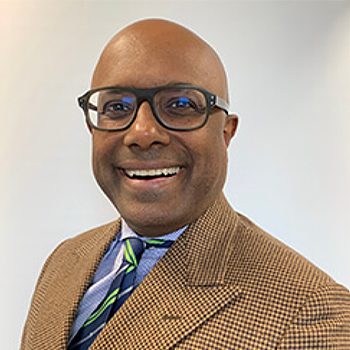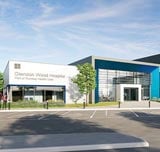


Bunions, also known as hallux valgus, are bony bumps on the outside of the big toe joint. The bump typically grows slowly over time, pushing the big toe towards the other toes, often resulting in joint deformity as the bunion progresses.
While non-surgical bunion treatments can help alleviate some discomfort, the only way to permanently remove a bunion is through bunion removal surgery. This involves cutting away the bony lump and realigning the joint to restore its natural position.
Keyhole bunion surgery is a form of non-invasive surgery that treats bunions by making small incisions rather than traditional open surgery. This technique promotes quicker recovery and reduced scarring.
When it comes to treating bunions, there are both non-surgical and surgical options to choose from.
Non-surgical bunion treatments
Bunions can only be corrected with surgery. But some non-surgical treatments can alleviate symptoms and make bunions easier to manage, such as:
Wearing bunion pads and toe spacers
Using cushioning shoe inserts or splints
Changing your footwear
Taking over-the-counter medications like nonsteroidal anti-inflammatory drugs (NSAIDs)
Applying ice packs to reduce swelling
Using prescription medications like corticosteroids for more severe pain.
Surgical bunion treatments
Surgical bunion treatments involve removing the bony bump and realigning the bones in the foot and toe. There are various techniques available, ranging from minimally invasive keyhole surgery to more extensive open surgery, where parts of the big toe joint are removed and replaced.
Read more about how to get rid of bunions.
Keyhole bunion surgery – also known as minimally invasive bunion surgery (MIS) or minimally invasive chevron Akin bunion surgery (MICA) – involves making several small incisions around the bunion to access the joint.
With keyhole bunion surgery, an osteotomy is performed through these small incisions, allowing the surgeon to cut and reposition the affected bones. The bones are then held in place using small, specially designed screws, which are passed through the small cuts.
After the bones are realigned, the bump will be less prominent, and any excess bone will be shaved to further reduce the deformity.
The main difference between minimally invasive keyhole bunion surgery and open bunion surgery is the size of the incisions (cuts) the surgeon makes in your foot.
With minimally invasive surgery, the operation is performed through small incisions made around the bunion. In contrast, open bunion surgery requires larger incisions that cut through all the layers of tissue around the bunion, extending down to the bone.
Keyhole bunion surgery typically involves incisions that are less than 20% the size of those made in open bunion surgery. The smaller cuts in keyhole surgery reduce the risk of infection, as larger cuts can increase the likelihood of complications. Additionally, because less soft tissue is disrupted, keyhole surgery is generally less painful, causes less inflammation, and usually leads to faster recovery.
Keyhole bunion surgery typically involves:
Smaller incisions (up to 80% smaller than in open surgery)
Less soft tissue damage
Reduced pain and inflammation
Less postoperative scarring
Lower risk of postoperative infection
Faster recovery time
If you decide to book your surgery with us, we’ll provide a clear, personalised quote for your treatment.
We offer an all-inclusive Total Care package, which includes a single, one-off payment at a pre-agreed price, delivering direct access to all the treatment you need. You can also spread the cost of your treatment with our finance options.
Keyhole bunion surgery may be covered by your medical insurance. We advise you to check directly with your insurance provider and obtain written confirmation before commencing treatment with us.
Before your surgery, you’ll be given specific instructions, such as fasting for a set amount of time before your procedure. You can find out more about your stay in a Ramsay Hospital, and read our tips on how to prepare for bunion surgery here.
Keyhole bunion surgery is typically performed under anaesthetic.
Once the operation begins, the surgeon will:
Make a small incision across the top of the foot allowing the bone connecting to your big toe (the first metatarsal bone) to be cut and trimmed and then repositioned
Use two screws to hold the first metatarsal bone in place
Cut and reposition the large bone in your big toe (the first proximal phalanx)
The first proximal phalanx will also be fixed in place with a screw
The protruding bone on the side of your big toe joint will be cut away and flattened
After the operation, you’ll be taken to a recovery room to rest as the anaesthetic wears off. You may feel disorientated or unsteady for up to 24 hours, so it’s a good idea to have someone with you who can drive or help you get home after surgery.
Most patients can go home the same day. You’ll be given a walking aid, such as crutches or a walking frame, to assist with your mobility during recovery.
Recovery time from bunion surgery varies from person to person. The speed of your recovery will depend on the extent of the surgery, how your body heals, and how well you care for your foot during recovery. Generally, patients experience the following stages of recovery, week by week:
In the first week, your focus will be on rest and recovery. You’ll spend most of your time sitting or lying down with your foot elevated. Pain is usually most intense during the first few days but can typically be managed with painkillers.
During this time, as pain and swelling start to decrease, you’ll be able to gradually walk more with the help of a walking aid. Your dressing and stitches may be removed, but you should avoid getting your foot wet during this period.
At this stage, you should be walking more comfortably and may no longer need a walking aid. You’ll likely be able to wear regular shoes again. If your job doesn't require excessive standing or walking, you might be able to return to work. Most patients can also begin driving during this period, but it’s important to consult with your surgeon and check with your car insurance company before doing so.
By this point, your foot should be almost fully healed, with little to no pain or swelling. You’ll be able to walk freely, engage in most sports, and resume driving. If your job is physically demanding, you may be ready to return to work. You should be able to resume your normal activities, ideally feeling better than before the surgery.
At this stage, your foot should be fully healed or close to it. You’ll be enjoying the benefits of your bunion removal surgery, experiencing significantly less pain and stiffness than before, and able to fully engage in your usual activities.
Throughout your recovery, your surgeon will provide post-operative advice and arrange follow-up appointments to monitor your progress. Read more about our bunion surgery recovery tips here.
Minimally invasive bunion surgery is a relatively common procedure, and most patients recover with few to no complications.
Most patients are pleased with the results, experiencing improved comfort and mobility. However, as with any surgery, keyhole bunion removal does carry some risks and potential side effects, though these are typically rare and minor.
Potential complications include:
Stiffness in the toe joint
Pain in the joint or the ball of the foot
Infection of the wound
Bleeding or blood clots
Issues with the fixation screws, such as pain or displacement
Delayed bone healing or misalignment
Recurrence of the bunion
If you’re concerned about the risks or complications, it’s important to discuss them with your Ramsay Health Care surgeon. They can provide personalised information and address any questions you may have.
It’s important to have your bunion removal surgery performed by an experienced orthopaedic surgeon who specialises in keyhole foot and ankle surgery. Orthopaedic surgeons focus on treating bones, joints, ligaments, tendons, and muscles and undergo rigorous training to master these areas.
Minimally invasive surgery bunion surgery should only be carried out by fellowship-trained orthopaedic surgeons with substantial experience in this specific technique, as recommended by NICE.
At Ramsay Health Care, we offer a variety of bunion treatments, including minimally invasive keyhole surgery. Your procedure will be performed by an experienced orthopaedic surgeon specialising in foot and ankle care. They’ll assess your condition and discuss the best treatment options for your needs.
You can trust that you’ll receive patient-centred care from highly trained staff in our modern, state-of-the-art facilities. After your surgery, we’ll help you recover quickly, reducing pain and stiffness while restoring function so you can get back to the activities you enjoy.
Contact us to find out more about non-invasive bunion surgery with Ramsay Health Care.



Ramsay Health Care UK are celebrating after being named as a Gold National Joint Registry (NJR) Quality Data Provider for the second year running, after successfully completing a national data quality audit programme for 25 hospitals offering orthopaedic procedures.
Duchy Hospital in Truro, proudly opened its state-of-the-art Imaging and Outpatient Suite representing a major investment in patient care, designed to enhance diagnostic capabilities and improve the overall experience for patients across Cornwall.
There’s cause for celebration at West Midlands Hospital in Halesowen, as the team marks an incredible milestone — 100 successful joint replacement surgeries using the advanced CORI robotic system.
The information, including but not limited to, text, graphics, images and other material, contained on this website is for educational purposes only and not intended to be a substitute for medical advice, diagnosis or treatment. Always seek the advice of your physician or other qualified health care provider with any questions you may have regarding a medical condition or treatment.
No warranty or guarantee is made that the information contained on this website is complete or accurate in every respect. The testimonials, statements, and opinions presented on our website are applicable to the individuals depicted. Results will vary and may not be representative of the experience of others. Prior patient results are only provided as examples of what may be achievable. Individual results will vary and no guarantee is stated or implied by any photo use or any statement on this website.
Ramsay is a trusted provider of plastic or reconstructive surgery treatments as a part of our wrap-around holistic patient care. Our personal, friendly and professional team are here to support you throughout to ensure the best possible care. All procedures we perform are clinically justified.
*Acceptance is subject to status. Terms and conditions apply. Ramsay Health Care UK Operations Limited is authorised and regulated by the Financial Conduct authority under FRN 702886. Ramsay Healthcare UK Operations is acting as a credit broker to Chrysalis Finance Limited.
Ramsay Health Care UK is not currently recruiting for any roles based outside of England. If you are interested in applying for a role with Ramsay Health Care UK, please note that all available positions are advertised exclusively on our official website: https://www.ramsayhealth.co.uk/careers. Be cautious of individuals or organisations that approach you directly for remotely-based roles. Always verify the authenticity of the job offer and be careful with whom you share your personal information. For more information and advice on employment fraud, please visit: https://www.ramsayhealth.co.uk/careers/recruitment-fraud